This week Marvel is once again testing the all-ages waters with a brand new Marvel Rising mini-series. The five-issue limited series is written by Dwayne McDuffie Award for Diversity Winner Nilah Magruder, whose success with the young reader-aimed M.F.K. graphic novel created waves across the industry. Does the latest Marvel Rising launch continue Magruder’s hot streak? Then, we check in on the adventures of Matt Murdock in Chip Zdarsky and Marco Checchetto’s third issue of Daredevil and see if old hornhead’s situation has improved any since the series debuted. Finally, the Age of X-Man rolls along, and we’ve got a review of the latest installment in the Leah Williams-written X-Tremists tie-in. It’s time for the Marvel Rundown!
 Marvel Rising #1
Marvel Rising #1
Written by Nilah Magruder
Illustrated by Roberto Di Salvo
Colored by Rachelle Rosenberg
Lettered by VC’s Clayton Cowles
Cover by Audrey Mok
Joe Grunenwald: This week Marvel’s all-ages initiative, Marvel Rising, returns to comics with a new miniseries that will hopefully be less confusingly-numbered than the previous one was! Samantha and AJ, what did you think of the first issue of the new series?
AJ Frost: The Marvel Rising initiative should be a slam dunk. It has all the right elements there: fun characters, an inspiring message, and stories that are appropriate for all readers. Yet, the execution of the series has left something to be desired. This new miniseries, which I had high hopes for, is just another disappointment. The story is so bland, the art is dull, the characters… let’s not even go there. I wonder when Marvel is going to create an actually exciting story under this banner and lose the filler.
Samantha Puc: Honestly, this hit so many of my buttons. The academic in me loved the school tour and the Arthurian-obsessed lit major in me even warmed to the sort of wacky, lackadaisical plot. I can definitely see how this wouldn’t be everyone’s cup of tea but I thought it was delightful, especially given the serious turn so many of Marvel’s books seem to be taking as of late. Joe, what did you think?
Grunenwald: I’m really torn about it. Like AJ, I want to like and support Marvel’s efforts to bring in new readers, and I love the characters involved. But I found the premise that brought the characters together to be thin at best, and the idea that they’d all be walking around campus in costume stretched credulity even for a comic where one of the main characters talks to squirrels. That said, once the action started up and we got into the meat of the plot, I really enjoyed this comic, and I think it could be a lot of fun going forward.
Puc: Wearing their costumes on campus was certainly a choice, but I was able to overlook that for the most part. I think if you lean into the campiness of this issue overall, that element feels less unnatural.
Frost: After the gimmicks that Marvel pulled with the first run of Marvel Rising, I’m skeptical if they even know what they have on their hands. Joe, I agree with you that that particular part of the book was pretty bonkers. But I’m not sure if we can use “campiness” as an excuse to wave off the structural problems of the book. Kamala’s narration is so hackneyed, the jokes pretty lame, and the overall feel makes this book seem rushed and made to order, rather than anything special. It could have been special. Instead, we have a bunch of heroes walking by the “Department of Science” building, oggling VR specks.
Grunenwald: It’s important not to overlook that this is a comic geared towards kids. That doesn’t give it a free pass, but I’m willing to cut it some slack as it tries to be accessible and relatable for new, young readers. I agree, though, that the jokes are pretty lame, and the writing on the campus tour didn’t feel natural at all. It felt like an actual campus tour, which I guess is a good thing that writer Nilah Magruder was able to capture that experience well, but on the other hand, that’s duuuuull. If the goal is to present computer science and other STEM fields of study to young readers as viable options, I guess it succeeded? There just have to be more interesting ways to do it.
Puc: I definitely think it’s important to remember that this book is geared toward a younger audience! That may be why I don’t have any particularly firm feelings on improvements that could be made… I think the emphasis on STEM is something we’ll see pushed frequently in all-ages books from big and small publishers, not necessarily in unique ways, which is unfortunate. But ideally, some kid who really likes The Sword In the Stone will pick this book up and recognize the characters and learn that there are plenty of career paths in an English degree. Maybe that’s because I have an English degree, so I’m feeling protective…
Grunenwald: English majors, represent!
Frost: Eh, I get the book is geared towards younger readers. But does that mean it should be written in such a clunky way? And yay political science, right? I suppose I’m just being extra-hard on this book because I really really want to see Marvel Rising be something that people can point to as the perfect (or near perfect) access point for some of Marvel’s more modern characters. And when it misses the mark, it’s painful.
Grunenwald: What do you guys think of the choice to set this book within Marvel continuity? That kind of surprised me to be honest.
Puc: My first thought was that I am afraid for literally every character in the Marvel universe with War of the Realms right around the corner…
Frost: I didn’t give it much thought. Out of continuity or in, I guess it doesn’t matter much to me. But now that you’re saying that, Sam, I think that makes that aspect of the book much more intriguing.
Grunenwald: Tying it to a continuity I feel like limits what you’re able to do with the characters. Nothing ‘important’ can really happen to three of the four heroes here because they all have their own solo series. Maybe it would’ve been a little less ‘by the numbers’ if this were a non-continuity title. Also does everyone in the computer science department at ESU know Squirrel Girl’s secret identity now? I must’ve missed that issue of Squirrel Girl.
Frost: It’s not hard to suss out. She’s the one with the pet squirrel!
Grunenwald: That is a completely separate girl with a completely separate squirrel!
Puc: Wait, doesn’t everyone have a pet squirrel?!
Grunenwald: I don’t know that Doreen considers Tippy Toe to be a pet as much as a friend. But squirrels are wild animals and The Beat does not condone anyone keeping one as a pet, end disclaimer. What did you guys think of Roberto Di Salvo’s art?
Frost: Wasn’t digging it, really. It was fine for this book, but I’m not sure it elevated it in any way.
Grunenwald: I, too, thought it was fine. It fits with the rest of Marvel’s house style.
Puc: I’m joining into this chorus of indifference with… more indifference. Are people still reading this? If you’re still reading this, thank you for caring about our thoughts on Marvel Rising.
Grunenwald: They all tuned out after we got into the finer points of Squirrel Girl and Tippy Toe’s relationship. Any final thoughts before we deliver our verdicts?
Frost: Sadly, this is a SKIP from me. There just isn’t enough here to entice the reader to care about what is going on.
Puc: I’m going to deliver a split verdict on this one. I think it’s a STRONG BROWSE if you’re part of a younger audience or perhaps a teacher looking to teach your students about story structure (what to do and what not to do, how to use allusions, etc), but if you’re an older reader looking for something with a stronger execution of concept, I’d say SKIP.
Grunenwald: Sam’s cheating, but I’m with her. I’ll split the difference and call it a WEAK BROWSE. I’d feel comfortable handing this to a new young reader to get them interested, but I wouldn’t recommend it to an older reader.
Final Verdict: The verdict is complicated this week! Samantha is split between a STRONG BROWSE and SKIP, AJ says SKIP and Joe gives it a WEAK BROWSE!
 Daredevil #3
Daredevil #3
Written by Chip Zdarsky
Illustrated by Marco Checchetto
Colored by Sunny Gho
Lettered by VC’s Clayton Cowles
Cover by Julian Totino Tedesco
Alexander Jones: AJ, Joe the man without fear is back in the pages of Daredevil #3. This installment puts Matt Murdock through the ringer. What are your general feelings about author Chip Zdarsky and artist Marco Checchetto’s run to-date?
Joe Grunenwald: It wouldn’t be a proper Daredevil comic if it wasn’t putting Matt through some sort of hell, now would it? This issue was particularly brutal, and while there were a few beats for me that didn’t quite land, I thought overall it was very well-done.
AJ Frost: Zdarsky is on a roll. His spins on all the characters he’s written are obviously done with love and a reverence for the source material. But at the same time, Zdarsky is pushing the characters and making them accessible to the contemporary reader. His run with Daredevil is undeniably in this mold as well. And the name of the game for Daredevil is struggle and triumph in the grittiest of circumstances.
Jones: I like Zdarsky’s approach to the narrative but something about this run hasn’t quite felt right for me. I think something has to be said about the Marco Checchetto pencils that I personally find to be obvious and a little too cool for Daredevil. Plus, I’m not getting a sense of odd humor or energy from a Zdarsky book. This book is really straightforward and the plot doesn’t have that singular driving element I have been waiting for. As the resident Daredevil fun I have a hard time discovering why I’m not connecting with this.
Frost: Maybe because there’s nothing revolutionary going on. While Zdarsky’s take is great for readers who have a passing knowledge of the character, to more experienced fans, I’m not sure if these are stories that go far in exploring some side of Matt that we haven’t seen in years past. So, Alex, what I’m getting from you is that you appreciate the technical aspects of the book, but the storytelling is nothing novel. Am I on the mark?
Grunenwald: I’d agree with that assessment as well, AJ. There hasn’t been anything in the first three issues of this series to distinguish it from past DD runs. I like a lot of things about the approach Zdarsky is taking, but his characterization of Matt is pretty straight-forward. As far as the art goes, for me, Checchetto’s linework isn’t my favorite thing in the world but it’s decent.
Jones: I agree. The super-serious tone just comes off as melodramatic to me. I really wonder if Zdarsky is going to change something about the series at the end of this arc. I can’t imagine that he would write a Daredevil story this generic. There were parts of his Spider-Man run that were a little dull but not consistently from issue-to-issue. I wish these comics were as good as the covers.
Frost: Having so many books to juggle means that the quality dips from issue-to-issue. I think the key for readers to consider is that this isn’t a bad book by any means. In fact, despite my constant barrages against the Marvel house style, I found the art really engaging. And the coloring was sharp!
Grunenwald: Yeah, I don’t dislike anything about it by any means, but I can absolutely see there’s a ‘been there, done that’ aspect to the tone of the story. That said, I’m a sucker for a tale where the hero is on the run from the police, and that’s basically exactly what this issue is, so I’m here for it. And I agree with you, AJ, that Sunny Gho’s coloring was strong throughout. I’m not sure how well it went with Checchetto’s linework at a few points, but it definitely elevated the overall look of the book.
Jones: I really like a cliché and paranoid, weirdo Daredevil. I don’t think this issue got it right. It played the tone through the whole thing really straight. I think the colors can be a little too minimalistic in the book. I would like to see the coloring stand out more.
Frost: Gho’s coloring made so much of the action pop much more vibrantly. I enjoyed the minimalistic coloring, Alex. I feel having a lack of color also made certain scenes even more harrowing and visceral.
Jones: I found the palette to be mostly what I would expect the creative team and character to have. That’s my problem with the story in a nutshell: it feels like we have been here with this character countless times.
Grunenwald: Can we talk about the description of Matt’s radar sense? I really appreciated that bit in the narration at the beginning and how it came back later in the issue. If the story is ‘been there, done that,’ at least Zdarsky is adding those little touches to expand the reader’s understanding of the character.
Frost: The radar sense was well-rendered. It was nice seeing the world through Matt’s eyes, in a way. That seems like a fun, Zdarsky-ian touch.
Jones: There were few moments where the exploration of how limited his powers are started to get interesting. I almost started buying into some of the internal narration and dread from the story for a few pages. The cliffhanger was really well-executed.
Grunenwald: I both liked how the cliffhanger played out and disliked the reveal, but that’s strictly due to personal distaste for that character. I’m interested to see how Zdarsky handles him, though.
Frost: I agree with that, Joe.
Grunenwald: We’re three issues in with new foil for DD, Detective Cole North. Do you guys have any thoughts about the character?
Frost: The tension between cop and vigilante is old hat. But the behavior of the street level cops–the non-elite figures–is really intriguing. A nice blurring of the lines.
Jones: I’m sure Zdarsky has something to say about him. He adds an unwieldy element to the story that has me interested. Do you guys have any final thoughts on the issue before we award a verdict?
Frost: This was a really good issue, but I can see your criticism of it more clearly now. I’m going to go with a BROWSE.
Grunenwald: I’d give it a BROWSE as well. This run has been great entry-level stuff for fans coming to DD from the Netflix series, and there’s compelling conflict between Matt and the authorities, but I can see how it could be dull for longtime Daredevil readers.
Jones: I would say this is a SKIP. Nothing is bad about the issue aside from the fact that it comes off as so derivative. I just still have a feeling like this run is going to catch my interest at some point. Do you guys get that feeling with this?
Grunenwald: I mean, I’m already interested, so. You’re a tough crowd, Alex!
Final Verdict: AJ and Joe say BROWSE, Alexander says SKIP!
 Age of X-Man: X-Tremists #2
Age of X-Man: X-Tremists #2
Written by Leah Williams
Pencilled by Georges Jeanty
Inked by Roberto Poggi
Colored by Jim Charalampidis
Lettered by VC’s Clayton Cowles
Cover by Rahzzah
Reviewed by Samantha Puc
As Marvel’s Age of X-Man event progresses, the dystopian reality Nate Grey has built is slowly beginning to crumble; seeing where, when and how the pieces fall makes for dynamic storytelling across multiple mini-series, all of which take place in this world and often overlap with one another. Herein, all forms of love, including romantic and familial, have been outlawed. For canonically queer characters, like several of the team members in the
X-Tremists, who act as this universe’s police force, that has particularly devastating consequences. To have your queerness stripped from you without your knowledge or consent is the kind of thing nightmares are made of — and Age of X-Man: X-Tremists #2 deals explicitly in nightmares.
In this issue, writer Leah Williams focuses particularly on Psylocke, a.k.a. Betsy Braddock, a canonically bisexual character who has a sadistic streak a mile wide. When she discovers that Blob, a.k.a. Fred Dukes, has a mild attraction to her, it sends her on a spiral — she wants to take the feelings away, but Fred admits that he’d rather feel useless longing than feel nothing at all. That, of course, is the crux of this alternate-universe event: we can’t possibly “evolve out of feeling love,” as the diehards in this world insist, so how can these characters reconcile their own urges with their obligation to uphold the law that forbids those same urges?
For Betsy, remembering what it felt like to be held by her mother is harder than remembering the recurring nightmare she had as a child. She questions Fred’s feelings, wanting to know if it “hurts” to feel attracted to her; even when her personhood has been stripped away by Nate Grey, she still maintains the same sense of fascination that she has in Earth-616. Simultaneously, she is struggling to understand her own feelings, which seem to be buried deep beneath the surface. Watching her navigate this world is painful, but Williams handles her arc with aplomb; her love for these characters is clear, even as they are literally put through Hell as a consequence of Nate Grey’s new fascism.
Williams is telling a high-risk story in X-Tremists. In addition to Betsy and Fred, the team also consists of Jubilee, Iceman, a.k.a. Bobby Drake, Northstar, a.k.a. Jean-Paul Beaubier, and Moneta, who’s brand-new and also terrifying and apparently deeply bigoted against “retrogrades,” a slang term she uses frequently to degrade those who choose to pursue love in spite of its illegality. Both Bobby and Jean-Paul are canonically gay in Earth-616 — and it’s apparent that Jean-Paul, at least, is feeling more than a little put-off by the task that’s been set upon his and his team’s shoulders. In fact, by the end of issue #2, it seems that all of these characters, with the exception of Moneta, are beginning to question their work. Even Fred, the team leader, admits he would rather lose his job than give up even the slightest feelings of attraction. It’s a bold claim, but it’s one that resonates deeply in a world where something has to be better than nothing.
Once again, this issue doesn’t contain a ton of action — but the emotional beats are beautifully rendered. Georges Jeanty and Roberto Poggi bring life to these characters in bold lines and razor-sharp facial expressions, each moment of doubt, of frustration, of anger, of friendship captured perfectly within the panels. Jim Charalampidis’ colors round out the aesthetics of this issue, reminding readers that just because everything looks serene, beautiful and calm, doesn’t mean it is. What’s lurking under the surface of this world is dark, dangerous and deadly, no matter how bright the sun shines down on the team as they do their work.
Frankly, the most surprising element of this issue, for me, was the incredible humanization of Fred, a character who has traditionally been a bad guy, mostly because he is very fat — surprise, surprise. To see a fat character given the chance to not only feel attraction to someone, but be vulnerable in that, is still revelatory, even in 2019 — and it shouldn’t be, but here we are. I am deeply curious to see how his story progresses, especially as Betsy interacts with him outside of the team dynamic, which is chaotic, busy and structured around specific rules and events as they are required to happen, such as setting controlled burns so that the X-Men can put out fires and prove to the world that they’re performing heroic acts.
I honestly cannot wait to see how the rest of the chips fall as Age of X-Man barrels toward its inevitably fiery end; X-Tremists is particularly engaging because of its stakes. I only hope these characters will make it out alright in the end, without any lasting damage from Nate Grey’s wildly out-of-touch approach to creating mutant utopia.
Final verdict: BUY. If you’re not following this series, you’re missing out on some truly powerful, subversive storytelling, which is a shame.
Next week it’s all hands on-deck for War of the Realms #1!


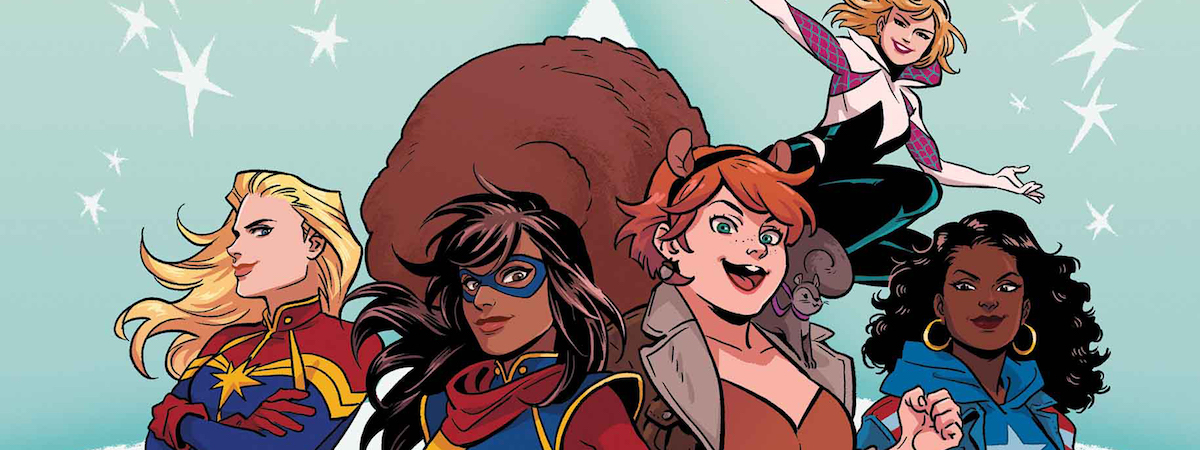
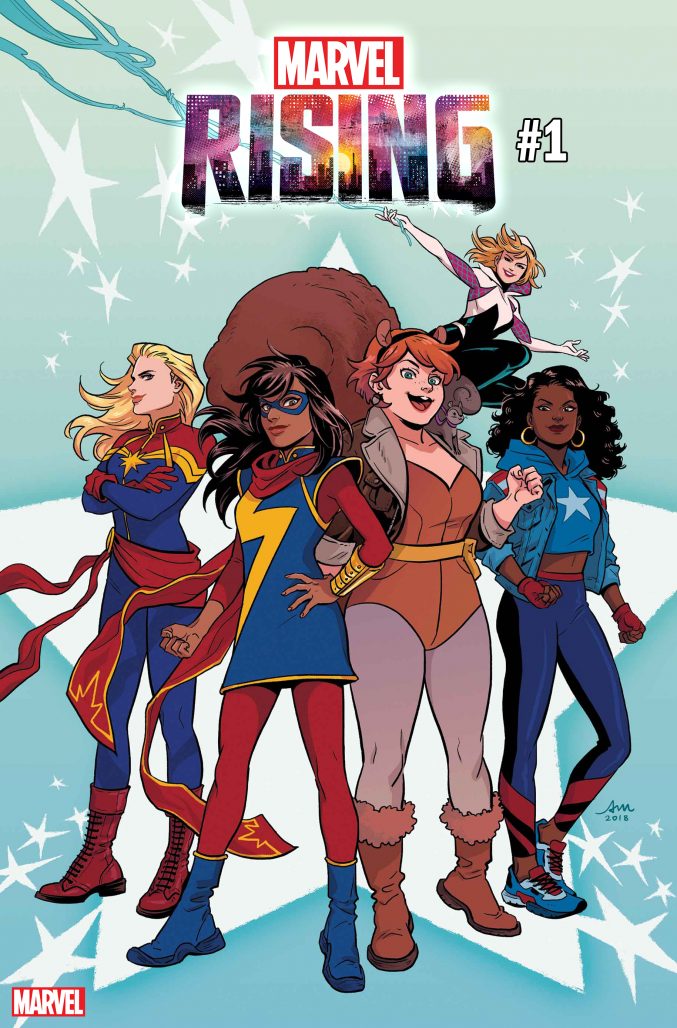 Marvel Rising #1
Marvel Rising #1
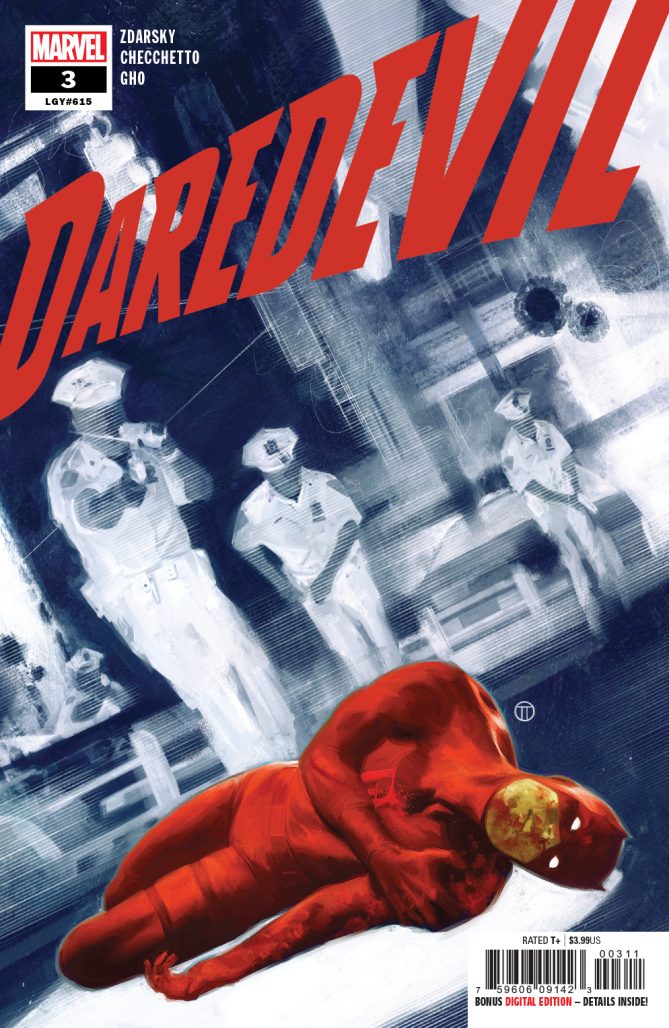 Daredevil #3
Daredevil #3
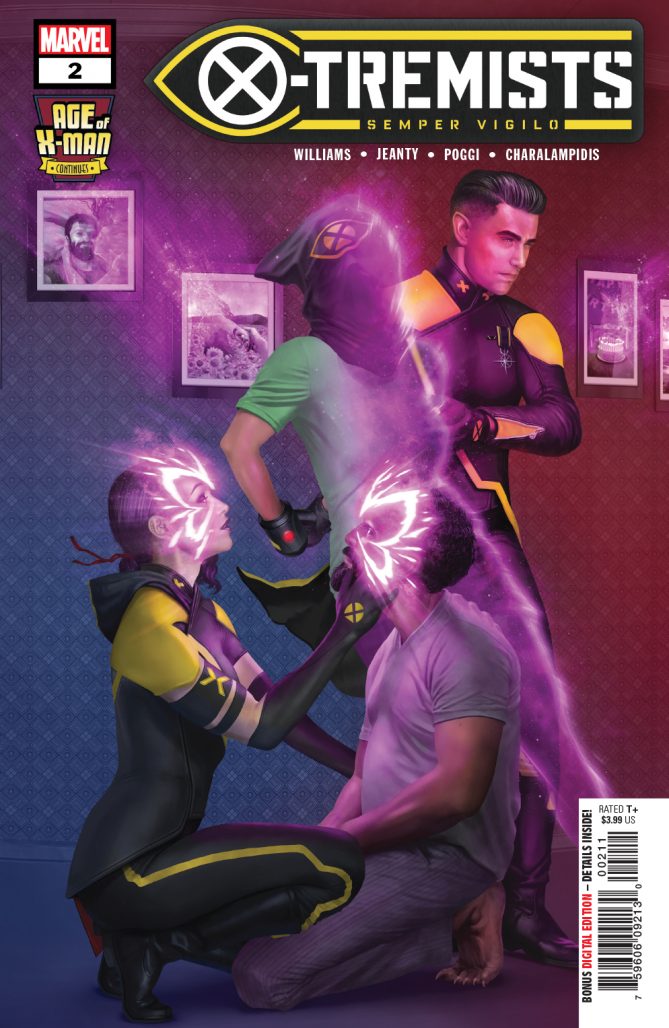

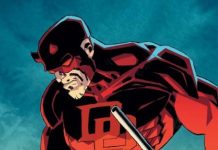

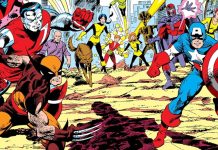



100% agreed – I enjoyed the first issue of The X-Tremists, but I really feel like Williams really showed the readers not just what’s at stake, but the damage Nate’s meddling has done to these characters this time around. Good old one-two punch to the heart, for sure. But man, I really just want someone to punt Moneta into the stratosphere.
I think we all want Moneta to really get her comeuppance.
Comments are closed.